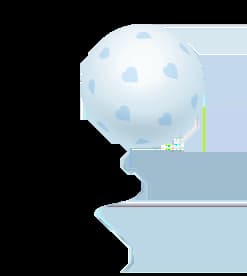Pregnancy is a journey filled with new discoveries at every turn. By the fourth month, you're officially in your second trimester—a phase often called the "honeymoon period" of pregnancy. The morning sickness subsides and your energy levels boost up, and the growing baby bump begins to feel more real. It’s a time when many moms-to-be start feeling more comfortable and excited about the journey ahead.
This month also marks the beginning of noticeable changes in your baby's growth and your body's adaptation to pregnancy. Let’s dive into the details of your fourth month of pregnancy and what it entails, including week-by-week updates, self-care tips, and much more.
What to Expect in Your Fourth Month
The fourth month of pregnancy (weeks 13-16) is characterized by significant developments in your baby and visible changes in your body. Many women find this month to be more enjoyable as early pregnancy symptoms like nausea and fatigue subside. This is also when your pregnancy becomes more noticeable to others as your baby bump starts to show.
You can feel more relaxed and optimistic as the risk of early pregnancy complications decreases. However, you might also experience mixed emotions, such as excitement about your growing baby and concern about the changes ahead. These feelings are perfectly normal and reflect the complexity of this life-changing experience.
Week-by-Week Tracking of Baby Development in Your Fourth Month
If you haven’t already started tracking your pregnancy, now’s the perfect time to begin! With the MamyPoko Pants Pregnancy Tracker, you can stay informed about your baby’s growth and your own health as you move through the months. The tracker provides personalized updates based on your last menstrual period or expected due date, giving you tailored insights into your pregnancy journey.
Here’s how to get started with our Pregnancy Tracker:
- Visit our website and navigate to the Pregnancy Tracker section.
- Enter your last menstrual period or conception date.
- Receive personalized updates on your baby’s development and your well-being throughout your pregnancy.
Login to analyze your pregnancy status by clicking here. As soon as you log in to your pregnancy tracker, you’ll be able to track your baby’s development week-wise. Let's take a look at the changes your baby will go through and how much your body will change within this period:
Week 13: Baby’s Development and Mother’s Body Changes
Baby’s Development:
- Your baby is about the size of a peach, measuring around 7.4 centimeters long and weighing approximately 25 grams.
- The baby’s vocal cords are forming, and their intestines are moving into their abdominal cavity.
- Bones continue to harden, and tiny ribs can begin to appear.
Mother’s Body Changes:
- Physical: You’ll notice less bloating and nausea, which can improve your energy levels significantly.
- Emotional: Your mood will remain stable, though some hormonal swings can persist.
- Hormonal: Hormone levels stabilize, reducing some symptoms like morning sickness but continuing others, such as tender breasts.
Dos & Don’ts:
- Do: Start incorporating light exercises like walking or prenatal yoga to stay active.
- Don’t: Avoid high-impact activities or anything that puts strain on your abdomen.
Week 14: Baby’s Development and Mother’s Body Changes
Baby’s Development:
- Your baby is now roughly the size of a kiwi fruit or half a banana, weighing around 43 grams and measuring about 8.7 cm.
- The baby’s facial muscles are forming, and they start emoting.
- The liver begins producing bile, while the thyroid gland starts functioning.
Mother’s Body Changes:
- Physical: A noticeable baby bump will appear, and your skin will glow due to increased blood circulation.
- Emotional: You will feel a sense of relief and excitement as you adjust to the second trimester.
- Hormonal: Increased estrogen levels can cause skin changes, including pigmentation or sensitivity.
Dos & Don’ts:
- Do: Focus on a balanced diet rich in iron, calcium, and folic acid to support the baby’s growth.
- Don’t: Avoid skipping meals; consistent nutrition is key.
Week 15: Baby’s Development and Mother’s Body Changes
Baby’s Development:
- Your baby is about the size of an apple, weighing around 70 grams and measuring around 10.1 centimeters long.
- The baby’s skeletal system continues to develop, and their legs grow longer than their arms.
- They start sucking their thumb, and their sense of hearing begins to develop.
Mother’s Body Changes:
- Physical: You can feel ligament pain as your body stretches to accommodate the growing baby.
- Emotional: Feeling the baby’s movements in your belly will lift your mood.
- Hormonal: You will experience an increase in appetite as your baby grows rapidly.
Dos & Don’ts:
- Do: Wear comfortable, supportive maternity clothes as your bump grows.
- Don’t: Avoid overly tight clothing that may restrict circulation.
Week 16: Baby’s Development and Mother’s Body Changes
Baby’s Development:
- At 16 weeks, your baby is the size of an avocado, measuring around 11.6 centimeters long from head to bottom and weighing about 110 grams.
- Their eyes can move, although the eyelids remain shut, and their ears are almost in their final position.
- The baby’s circulatory system is fully functional, and their heart pumps around 25 quarts of blood daily.
Mother’s Body Changes:
- Physical: Your belly continues to grow, and you will experience back aches as your posture adjusts.
- Emotional: The reality of becoming a parent will start to sink in, bringing both excitement and apprehension.
- Hormonal: Hormones will continue to affect your hair, skin, and emotions.
Dos & Don’ts:
- Do: Stay hydrated and rest frequently to avoid fatigue.
- Don’t: Don’t overexert yourself; listen to your body.
The Importance of Prenatal Care
Prenatal care is vital during the fourth month to monitor your baby’s development and your health. Routine check-ups help ensure that both mother and baby are progressing well.
Key Tests and Appointments:
- An ultrasound to assess the baby’s growth and detect any abnormalities.
- Blood tests to check for gestational diabetes and iron levels.
- A quad marker screening to evaluate the risk of certain conditions.
What to Eat
Your baby’s rapid growth in the fourth month requires adequate nutrition. Focus on a diet that supports both your energy levels and your baby’s development.
Foods to Prioritize:
- Lean proteins like chicken, eggs, and legumes.
- Whole grains for sustained energy.
- Calcium-rich foods like milk and cheese for bone health.
- Fresh fruits and vegetables for essential vitamins and minerals.
Foods to Avoid:
- Undercooked meat and raw fish.
- Foods high in sugar or unhealthy fats.
- Unpasteurized dairy products and certain types of fish with high mercury content.
Common Misconceptions About the Fourth Month of Pregnancy
Myth: You eat for two now.
- Fact: While your calorie needs increase slightly, overeating is unnecessary and can lead to unhealthy weight gain. Focus on nutrient-dense foods.
Myth: It’s too early to feel the baby move.
- Fact: Some women may feel the baby move (quickening) as early as week 15, although this varies for first-time mothers.
Lifestyle Changes for a Healthy Pregnancy
The fourth month is a great time to adopt healthy lifestyle changes that benefit both you and your baby:
- Stay Active: Regular exercise like swimming or walking can improve circulation and reduce pregnancy-related discomforts.
- Get Enough Sleep: Aim for 7-9 hours of sleep and use pillows to support your growing belly.
- Manage Stress: Engage in relaxation techniques like meditation or prenatal yoga to stay calm and centered.

Conclusion
The fourth month of pregnancy is an exciting phase as you transition into the second trimester. From your baby’s rapid growth to the emergence of your baby bump, this month is all about embracing the changes and preparing for the months ahead. Remember to prioritize prenatal care, eat a balanced diet, and make necessary lifestyle adjustments to ensure a smooth journey.
FAQ's
Q. What changes should I expect in my body during the fourth month of pregnancy?
Ans.During the fourth month, you’ll notice a visible baby bump, glowing skin due to increased blood circulation, and reduced symptoms like nausea and fatigue. Some women also experience ligament pain as the uterus grows. Emotional stability improves, although occasional mood swings are normal due to fluctuating hormones. Overall, you’ll likely feel more energized.
Q. How big is my baby at four months pregnant?
Ans.By the end of the fourth month, your baby is about the size of an avocado, measuring roughly 11.6 centimeters and weighing around 110 grams. Major developments are underway—facial features become more defined, bones continue to harden, and the circulatory system is fully functional, pumping blood throughout their growing body.
Q. Is it normal to feel baby movements in the fourth month?
Ans.Yes, some mothers feel the first fluttering movements, known as "quickening," as early as 15-16 weeks. However, it varies, especially for first-time moms who might not recognize the feeling right away. These early movements feel like gentle flutters, bubbles, or tiny twitches in your abdomen, signaling your baby's growing strength.
Q. What should I include in my diet during the fourth month?
Ans.A balanced diet is essential. Focus on lean proteins (chicken, eggs), whole grains, and calcium-rich foods (milk, cheese) to support the baby's growth. Fresh fruits and vegetables supply vital vitamins. Avoid undercooked meat, high-mercury fish, and unpasteurized dairy. Staying hydrated is equally important for both your health and the baby's development.
Q. Are prenatal check-ups important during the second trimester?
Ans.Absolutely! Prenatal check-ups monitor your baby’s development and your overall health. Key assessments include ultrasounds, blood tests for gestational diabetes, and screenings for potential genetic conditions. Regular visits also give you the chance to discuss any concerns, track weight gain, check blood pressure, and ensure you’re progressing safely through pregnancy.
Q. How can I stay active safely during the fourth month?
Ans.Engage in low-impact exercises like walking, swimming, or prenatal yoga. These activities boost circulation, ease back pain, and support healthy weight gain. Always consult your doctor before starting any new exercise routine and avoid activities that involve high impact, risk of falling, or put excessive pressure on your abdomen.
Q. Can I feel more emotional during the fourth month of pregnancy?
Ans.Yes, emotional fluctuations are normal. While hormonal swings stabilize compared to the first trimester, you might still experience a mix of excitement, anxiety, or moodiness. It’s important to prioritize mental health—talk to loved ones, practice mindfulness, and consider prenatal yoga or relaxation techniques to help manage emotions.
Q. What are common misconceptions about pregnancy in the fourth month?
Ans.A major myth is that you need to "eat for two"—in reality, only a slight increase in calories is necessary, not double. Another misconception is that it’s too early to feel movement, but many women do feel the baby around week 15 or 16. Accurate knowledge supports a healthier pregnancy experience.
Q. What are key lifestyle changes to adopt during the fourth month?
Ans.Focus on maintaining an active lifestyle, eating nutritious foods, getting adequate sleep, and managing stress. Using supportive pillows for sleep, engaging in moderate physical activity, and practicing relaxation techniques like meditation can significantly improve your well-being. These adjustments help create a healthier environment for both you and your baby.
Q. How can a pregnancy tracker benefit me in the second trimester?
Ans.A pregnancy tracker provides week-by-week insights into your baby’s growth and your body's changes. It helps you stay informed, manage appointments, and feel more connected to your pregnancy journey. Trackers also offer reminders for self-care practices, diet tips, and key milestones, making it easier to navigate each phase confidently.




















